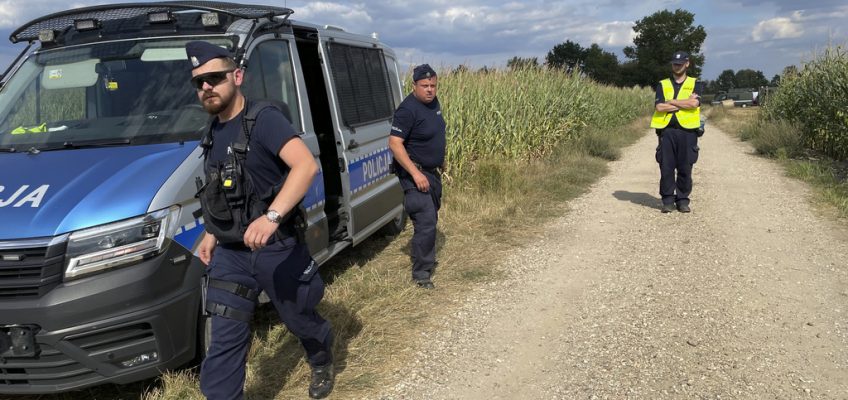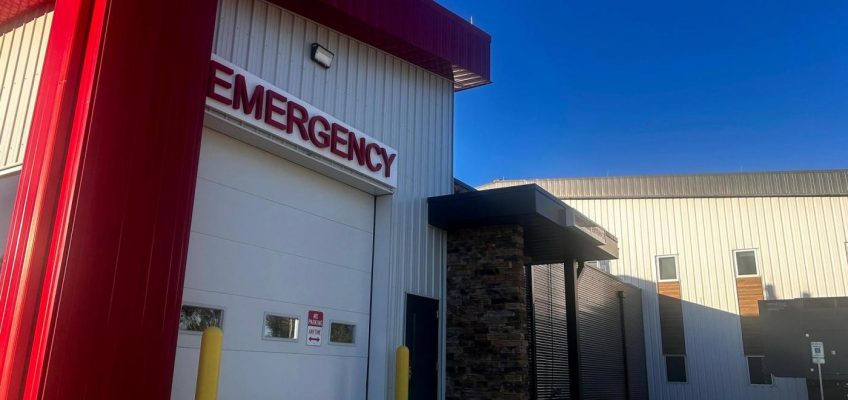The crime drama “Night Always Comes” attempts to shine a light on the economic disparity in this country.
That’s admirable, but the film from director Benjamin Caron — an adaptation of Willy Vlautin’s novel “The Night Always Comes” debuting this week on Netflix — does so quite inelegantly.
In the film’s first few minutes, the lead character, Vanessa Kirby’s Lynette, drives by the homeless in the streets of Portland, Oregon, as heavy-handed, almost surely fictional news reports drone on about rising costs and frozen wages.
You’d think that maybe she’d eventually change the channel, given that Lynette certainly is feeling the crush of financial strain. Working two jobs, she stands at the precipice of losing the small house in which much of her troubled adolescence took place.
It is now home for her — as well as her older brother, Kenny (Zack Gottsagen, “The Peanut Butter Falcon”), who suffers from developmental disabilities, and her mother, Doreen (Jennifer Jason Leigh, “The Hateful Eight”) — but she does not own it.
With $25,000 from Doreen, Lynette will sign papers giving her the in-need-of-some-love structure, but Mom is a no-show at the meeting with the seller and an attorney. Turns out that instead of going to said meeting, Doreen was enticed by a Mazda sale and used the money as the sizable down payment on a sporty white number.
While Lynette is, understandably, furious, the seemingly obtuse Doreen is unsympathetic toward her daughter and dismissive of anger — an example of the kind of sophomoric storytelling that plagues “Night Always Comes.”
Related Articles
‘Sunday Best: The Untold Story of Ed Sullivan’ review: How the TV variety show boosted Black talent when segregation was the norm
‘Highest 2 Lowest’ review: Spike Lee and Denzel Washington re-team for a heist movie that pays off
‘Freakier Friday’ review: A multiplied Disney reboot for the age of anxiety
‘Together’ review: Codependency gets a little sticky in clever horror parable with Alison Brie and Dave Franco
At 70, Godzilla keeps on smashing expectations, buildings
We are given the impression that Lynette has come a long way from the type of behavior that earlier had landed her in trouble and cost her employment. Nevertheless, she decides she must do whatever she can to acquire the $25K before a rescheduled meeting with the house’s owner first thing in the morning.
She begins by trying to squeeze a loan out of a businessman, Scott (Randall Park, “Fresh Off the Boat”), who sometimes pays her for sex. Instead, he doubles the usual amount he pays her — to $1,000 — as a parting gift. More important, he forgets the key fob to his Mercedes in their hotel room, so she steals it without, it would seem, much of a plan for how to turn it into the money she needs.
Next is a visit to an escort friend, Gloria (Julia Fox, “Uncut Gems”), shacked up in the luxury apartment of a well-to-do individual. Gloria owes her money, but, when she refuses to give Lynette all of it, the latter hatches a plan to steal the safe from which her friend had retrieved some cash.
She recruits the help of a reluctant coworker and ex-con, Cody (Stephan James), who believes he knows where they can take the hefty locked container.
Stephan James as Cody in “Night Always Comes.” (Allyson Riggs/Netflix/TNS)
From here, Lynette becomes increasingly desperate — and, as a result, the narrative grows more and more depressing — our protagonist eventually encountering other unsavory types portrayed by Michael Kelly (“House of Cards”) and Eli Roth (“Inglourious Basterds”).
Penned by Sarah Conradt, “Night Always Comes” eventually fills in some of the blanks regarding Lynette’s tragic and traumatic past, and the character seems to care deeply about Kenny staying out of government-ordered care.
All of that, and given the fact that Kirby (“The Fantastic Four: First Steps,” “Pieces of a Woman”) is an extremely talented actor, should lead the viewer to become relatively invested in Lynette. It’s simply tough to get there, though, seeing the choices she makes, even while acknowledging the circumstances.
The strongest performance is turned in by James (“Race,” “If Beale Street Could Talk”), who comes the closest to tapping into something that is convincingly emotional. If we struggle to muster empathy for Lynette, we do dig up some, if not a ton, for Cody.
With several episodes of “The Crown” to his credit, as well as a few installments of the excellent “Star Wars” series “Andor,” Caron’s previous film was the predictable 2023 con drama “Sharper.” Disappointingly, “Night Always Comes” is a step down from that, the director never succeeding in the admittedly tall task of finding a way to make a story like this one engrossing.
Ultimately, if “Night Always Comes” has a message, it’s perhaps that for many facing economic uncertainties, things are hopeless.
True as that may be, we’d hoped for something more.
‘Night Always Comes’
Where: Netflix.
When: Aug. 15.
Rated: R for language throughout, some sexual content, drug content and violence.
Runtime: 1 hour, 48 minutes.
Stars (of four): 1.5.




